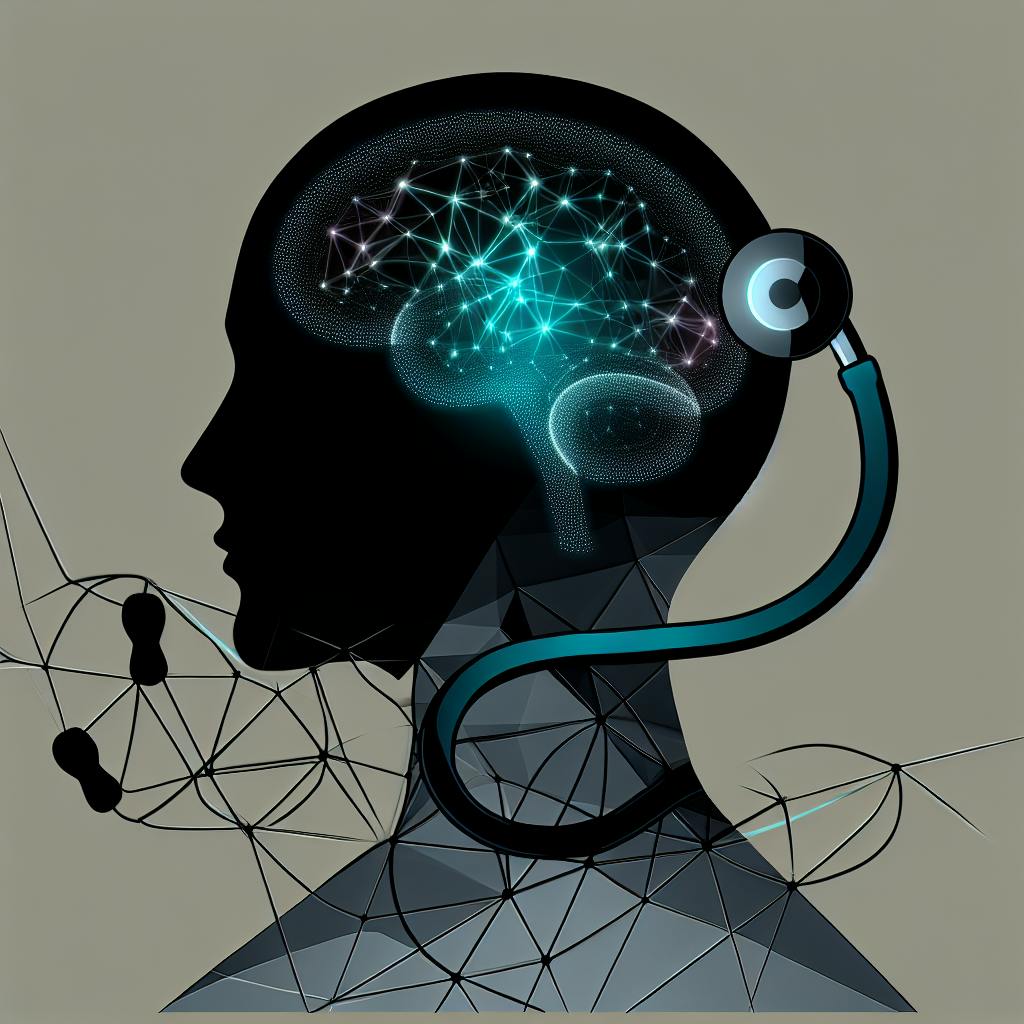AI scribes, or virtual scribes, use speech recognition and natural language processing to automate clinical note-taking during doctor-patient conversations. This technology can:
- Streamline clinical workflows
- Reduce administrative burdens on healthcare providers
- Allow more time for direct patient care
Compared to traditional manual documentation methods:
| Method | Advantages | Disadvantages |
|---|---|---|
| Traditional | - Familiarity with existing systems | - Time-consuming - Error-prone - Diverts attention from patients |
| AI Scribes | - Automated note-taking - Reduced administrative work |
- Initial technology investment - Potential technical issues |
AI scribes can improve documentation accuracy, clinician productivity, and the overall patient experience through user-friendly interfaces and seamless EHR integration. As the technology evolves, widespread adoption and advancements in areas like natural language processing and predictive analytics are expected.
Key challenges include ensuring data security, achieving interoperability with existing systems, and gaining clinician buy-in through education and training. With a focus on user-centered design principles, AI scribes have the potential to revolutionize clinical documentation and enhance patient care.
1. Traditional Clinical Documentation
Documentation Process
Traditional clinical documentation involves a manual process of recording patient information, diagnoses, and treatment plans. This process can lead to inaccuracies and inconsistencies.
Time Efficiency and Productivity
Physicians spend a significant amount of time on documentation tasks, up to 55% of their time. This takes away from direct patient care, leading to reduced productivity and increased burnout.
Accuracy and Error Rate
Manual documentation methods are prone to errors, which can have serious consequences for patient care. Incomplete records can lead to denied claims, affecting revenue for medical services rendered.
Challenges
The traditional clinical documentation process is rigid and inflexible, making it difficult to adapt to changing healthcare needs. Relying on human scribes to offload administrative burdens provides temporary relief but is not a definitive solution.
| Challenge | Impact |
|---|---|
| Time-consuming | Reduces direct patient care time |
| Prone to errors | Affects patient care and revenue |
| Rigid and inflexible | Difficult to adapt to changing healthcare needs |
Overall, traditional clinical documentation methods are time-consuming, prone to errors, and divert clinicians' attention away from patient care. It is essential to explore alternative solutions, such as AI scribes, to improve the clinical documentation process and enhance healthcare UX.
2. AI Scribes
Documentation Process
AI scribes transform the clinical documentation process by using artificial intelligence and natural language processing to capture and transcribe conversations between physicians and patients. This technology enables real-time data entry and note generation, streamlining the documentation process and reducing the administrative burden on clinicians.
Accuracy and Error Rate
AI scribes significantly improve the accuracy of clinical documentation by minimizing the risk of human error. With AI-powered transcription, clinicians can focus on reviewing and editing notes, rather than manually recording information.
Time Efficiency and Productivity
By automating the documentation process, AI scribes free up clinicians' time to focus on direct patient care. This leads to increased productivity and improved patient outcomes.
User Experience and Interface Design
AI scribes are designed to provide an intuitive and user-friendly interface, allowing clinicians to easily review and edit notes. The technology seamlessly integrates with electronic health record (EHR) systems, ensuring a smooth and efficient documentation process.
Challenges
While AI scribes offer numerous benefits, they also present some challenges. These include:
| Challenge | Impact |
|---|---|
| Ensuring accuracy and reliability of AI-generated notes | Requires ongoing training and quality control |
| Integrating AI scribes with existing EHR systems | May require significant investment and resources |
Despite these challenges, AI scribes have the potential to transform the clinical documentation process, improving the overall quality of patient care.
Comparing Traditional and AI Documentation
Traditional Clinical Documentation vs. AI Scribes: A Comparative Analysis
Healthcare providers have traditionally relied on manual methods to record patient data. However, with the advent of artificial intelligence (AI), AI-powered medical scribes have emerged as a viable alternative. In this section, we'll compare traditional clinical documentation and AI scribes, highlighting their advantages and disadvantages.
Traditional Clinical Documentation
Traditional clinical documentation involves manual data entry by healthcare providers, which can be time-consuming and prone to errors. This method relies on clinicians to accurately record patient information, diagnoses, and treatment plans, often resulting in incomplete or inaccurate records.
AI Scribes
AI scribes utilize natural language processing and machine learning algorithms to capture and transcribe conversations between physicians and patients in real-time. This technology enables accurate and efficient documentation, reducing the administrative burden on clinicians.
Comparative Analysis
Here's a table summarizing the advantages and disadvantages of traditional clinical documentation and AI scribes:
| Method | Advantages | Disadvantages |
|---|---|---|
| Traditional Clinical Documentation | - Familiarity with manual documentation - No initial investment in technology |
- Time-consuming and prone to errors - Incomplete or inaccurate records - Clinician burnout |
| AI Scribes | - Accurate and efficient documentation - Reduces administrative burden on clinicians - Improved patient care |
- Initial investment in technology and training - Integration with existing EHR systems may be challenging - Dependence on AI technology |
In conclusion, while traditional clinical documentation has its drawbacks, AI scribes offer a more efficient and accurate solution for clinical documentation. By leveraging AI technology, healthcare providers can reduce the administrative burden on clinicians, improve patient care, and enhance the overall quality of clinical documentation.
sbb-itb-527d68c
User-Focused Design for AI Scribes
AI scribe software must be designed with the user in mind to ensure a seamless integration into the clinical workflow. This involves creating an intuitive and user-friendly experience for healthcare professionals.
Building Trust through Design
Clinicians need to trust the accuracy and reliability of AI-generated notes. A well-designed AI scribe system can foster trust by providing transparent and accountable documentation processes.
| Design Element | Description |
|---|---|
| Layer view feature | Allows clinicians to clearly distinguish between machine-generated and human-inputted information, promoting transparency and accountability |
Designing for Clinical Workflow
AI scribe software must accommodate the fast-paced and dynamic nature of clinical environments. This involves streamlining documentation processes, reducing clicks and keystrokes, and minimizing distractions.
| Design Principle | Description |
|---|---|
| Streamlined documentation | Reduces clicks and keystrokes, minimizing distractions |
| Seamless EHR integration | Enables clinicians to access critical patient information quickly and efficiently |
The Future of Clinical Documentation
As AI technology continues to evolve, the importance of user-centered design principles will only continue to grow. By prioritizing the needs of clinicians and patients, AI scribe software can revolutionize clinical documentation, improving accuracy, efficiency, and overall patient care.
The Future of Clinical Notes UX
The integration of AI scribes in healthcare is set to transform clinical documentation, changing the way clinicians interact with patients and electronic health records (EHRs). As AI technology advances, we can expect to see more sophisticated and user-friendly AI scribe systems that seamlessly integrate into clinical workflows.
Widespread Adoption and Advancements
The future of clinical notes UX lies in the widespread adoption of AI scribes, driven by their ability to improve documentation accuracy, reduce clinician burnout, and enhance patient care. As AI scribes become more prevalent, we can expect advancements in:
| Area | Description |
|---|---|
| Natural Language Processing (NLP) | AI scribes will better understand complex medical terminology, nuances of human language, and context-specific information. |
| Customization and Specialization | AI scribes will be tailored to specific medical fields or practices, allowing for more accurate and relevant documentation. |
| Predictive Analytics | AI scribes will provide clinicians with predictive insights, enabling them to make more informed decisions and improve patient outcomes. |
Integration Challenges and Opportunities
While AI scribes hold tremendous promise, their integration into healthcare systems will not be without challenges. Key hurdles include:
| Challenge | Description |
|---|---|
| Data Security and Privacy | Ensuring the secure storage and transmission of sensitive patient data will be crucial. |
| Interoperability | Seamless integration with existing EHR systems and other healthcare technologies will be essential. |
| Clinician Buy-In | Educating and training clinicians on the effective use of AI scribes will be vital to their successful adoption. |
Despite these challenges, the potential benefits of AI scribes in healthcare are undeniable. By prioritizing user-centered design principles, addressing integration challenges, and embracing the opportunities presented by AI technology, we can create a future where clinical documentation is more efficient, accurate, and patient-focused than ever before.
FAQs
Can AI be a medical scribe?
Yes, AI can be a medical scribe. AI medical scribes use speech recognition and natural language processing to capture and transcribe conversations between physicians and patients during clinical encounters. They can also extract relevant information from the conversation and populate it into the electronic health record (EHR) system.
What can AI medical scribes do?
| Task | Description |
|---|---|
| Transcribe conversations | Capture and transcribe conversations between physicians and patients |
| Extract relevant information | Extract symptoms, diagnoses, medications, procedures, and orders from the conversation |
| Populate EHR system | Populate the extracted information into the electronic health record (EHR) system |
| Generate summaries and recommendations | Generate summaries and recommendations based on clinical notes and evidence-based guidelines |
By automating these tasks, AI medical scribes can help reduce the administrative burden on clinicians, improve documentation accuracy, and enhance patient care.


